Vacuum cleaners for collecting water: features, types and tips for choosing
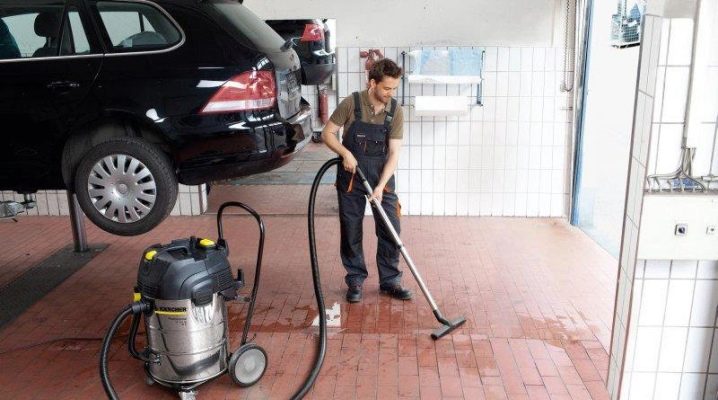
Typically, a vacuum cleaner is associated with the removal of dust and fine solid dirt. However, there is a special type of this equipment - a vacuum cleaner for collecting water. This technique deserves a separate discussion.
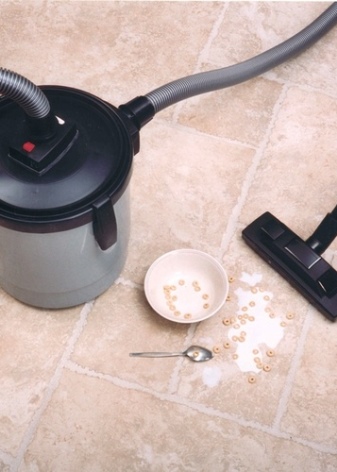
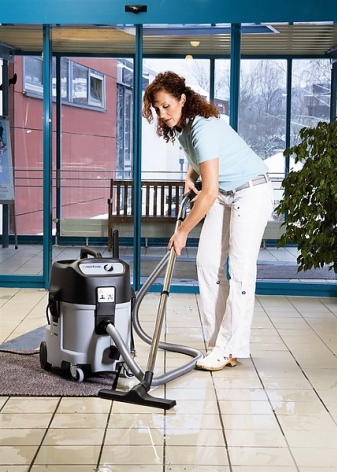
Peculiarities
You can use a water vacuum cleaner to thoroughly clean furniture, including with a lot of water. This technique is actively used by cleaning companies. Usually professional devices are designed for the highest possible load. Their feature is also the ability to collect dirt. Similar vacuum cleaners are needed in car washes to pick up wet dirt that accumulates under the rugs.
An attempt to remove this moisture with ordinary vacuum cleaners that do not have a special function can result in unpleasant consequences - sometimes the device is short-circuited and burned out. Cleaning of liquid mud is also relevant for construction companies. A lot of such waste is generated when drilling and drilling walls, preparing openings and holes. No diamond drilling session is complete without a vacuum cleaner with a liquid collection function.


But even in everyday life, such a technique is necessary. With its help, accidentally spilled water is removed. It is possible to clean heavily clogged parts of carpets and other coverings.
Car owners will also be delighted to have a special vacuum cleaner. Thanks to him, you can once again not contact a professional service in order to put things in order in the salon. Of course, such different tasks cannot be solved by any one device, albeit very good in its characteristics.


Varieties
A vacuum cleaner that collects water from the floor is often made universal, that is, it is capable of drawing in dust in addition to water. But there are also designs that are designed strictly for wet cleaning. A prime example of this group is the Nilfisk IVB 5 WET. It lacks a dust filter. Universal models can be equipped with:
- aquafilters;
- HEPA filters;
- wet cleaning nets;
- separator cleaners.


Some modifications are equipped with a pair of filters: one is designed for dry cleaning, the other for wet cleaning. This solution is rather inconvenient - an attempt to use filters for other purposes turns into a breakdown of the vacuum cleaner. You will have to systematically check whether the correct cleaner is supplied, and this check is carried out before each cleaning.


Some firms took into account such difficulties and complaints from consumers. Therefore, now there are vacuum cleaners equipped with unified dust-water cleaners. An example of such equipment is the Shop-Vac Super 1300, in which it is not necessary to replace the cleaning unit when changing the cleaning program. The number of such models is still small, but their presence on the Russian market will grow.


Which devices are better?
Vacuum cleaners used for cleaning liquids have both advantages and disadvantages. However, problems can arise when using any filter. So, HEPA:
- is very expensive;
- requires fairly frequent changes;
- when moistened, it becomes covered with nests of mold and other microscopic fungi;
- absorbs liquid slowly;
- requires constant rinsing and drying after each use - if this is not done, a bad odor may appear.

Experts believe that the safest industrial vacuum cleaner is a separator format. The separation of dust and air is achieved using:
- mud sedimentation tanks;
- rotating centrifuges;
- permanent magnets.

The most commonly used centrifugal separation unit. Total purification of the pumped air is guaranteed.
The advantage of the separator is that it allows you to do without any filters. A special reservoir contains liquid. The separator device is guaranteed to eliminate all allergens and substances harmful to the immune system.
Is it possible to make a construction vacuum cleaner with your own hands?
Having turned to any catalog of water vacuum cleaners (both branded and on the websites of specialized stores, chains selling household appliances), people notice that such devices are expensive. And by itself there is a desire to do something with your own hands. Self-assembly allows you to reduce costs many times, and sometimes several tens of times. It will be easy and cheap to repair a homemade device. But it is required:
scrupulously study the features of the system and be able to design it;
take into account all potential hazards;
refuse to clean the air streams from dust (home-made systems only suck in water).


Tips for selection and use
In general, you can vacuum a damp floor, remove water with any model. But you should take into account the subtleties in order to get the best result. Experts note that the undisputed leader is the Karcher brand. She always supplies quality vacuum cleaners, however, her products are very expensive. But this is not a drawback, since reliable and solid equipment cannot be cheap in principle.
Vacuum cleaners made in the countries of Southeast Asia "on the knee" are available and inexpensive, but their durability is in great doubt. As for the products of the leading concerns, they are clearly divided into segments: household, automotive, construction, for industrial use. Devices from different segments can replace each other, but not too well. The Karcher MV series is considered suitable for both dry and wet cleaning.


The positive features of these devices are long service life and relative lightness. But they are expensive. In addition, you will only have to buy air filters from the same manufacturer. Another line is intended for dry cleaners - its cost is 450-800 US dollars. The devices of this line are suitable for cleaning car interiors and home furniture.
The most expensive modifications of vacuum cleaners for collecting water deserve special mention. The Pro-Aqua model will cost consumers approximately $ 2,000. The firm claims that this is one of the best modifications to date. Made in Slovenia, Nyla-NST (3000 USD) has a separator circuit, designed primarily for dry cleaning. The Rainbow costs $ 4,000, but comes with a HEPA filter as standard.


You should also consider:
- vacuum cleaner power;
- tank capacity;
- the intensity of water absorption;
- weight and dimensions;
- material from which the vacuum cleaner is made.

Steel housings are highly resistant to corrosion (due to special enamels). Its other positive properties are mechanical strength and resistance to corrosive substances. The motors of water vacuum cleaners, designed for short-term operation, are supplied with a single-phase current. More efficient devices are equipped with three-phase motors.
Popular models
Returning to individual modifications, it is worth highlighting the Phantom PH2002. This is a stylish black car vacuum cleaner. Power of 0.08 kW is enough to put things in order in any corner of the vehicle. The device is compact and can be used without unnecessary problems.

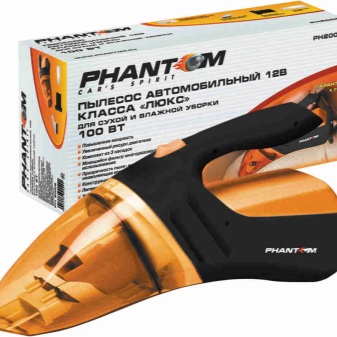
A good alternative is the Ghibli POWER WD 22 P. A device measuring 50x38x48.5 cm consumes 1.25 kW per hour. Air vacuum reaches 235 mbar. 71 liters of air are pumped in a second. The garbage container is designed for a volume of 22 liters. The dry weight of the vacuum cleaner is 8.7 kg.


The Numatic WV 470-2 water vacuum cleaner is almost as effective. Its power reaches 1.2 kW. The length of the mains cable (10 m) is sufficient for comfortable cleaning.The vacuum cleaner weighs 6.3 kg. Its dimensions are 35.8x45x71 cm.

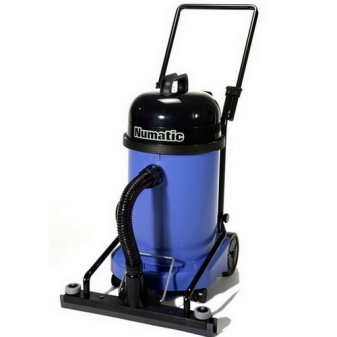
The popular unified model is the Starmix NSG uClean LD 1432 HMT. It allows you to collect not only liquid, dust and wet dirt, but also steel shavings, small stones. The vacuum cleaner will cope with sawdust. The power consumption is 1.4 kW. The air consumption per second reaches 69 liters, and the dirt is sent to a 32 liter bin.


Regardless of the specific model of the vacuum cleaner, you can not only collect water, but also wash the floor. For this, the liquid is pumped most intensively. It is pulled back just as powerfully. Then the backing will not deteriorate.
When harvesting water, you must carefully monitor its amount - overflowing the chamber is very dangerous; also do not collect very dirty liquid.

For information on how to do wet cleaning with a vacuum cleaner, see the video below.













The comment was sent successfully.